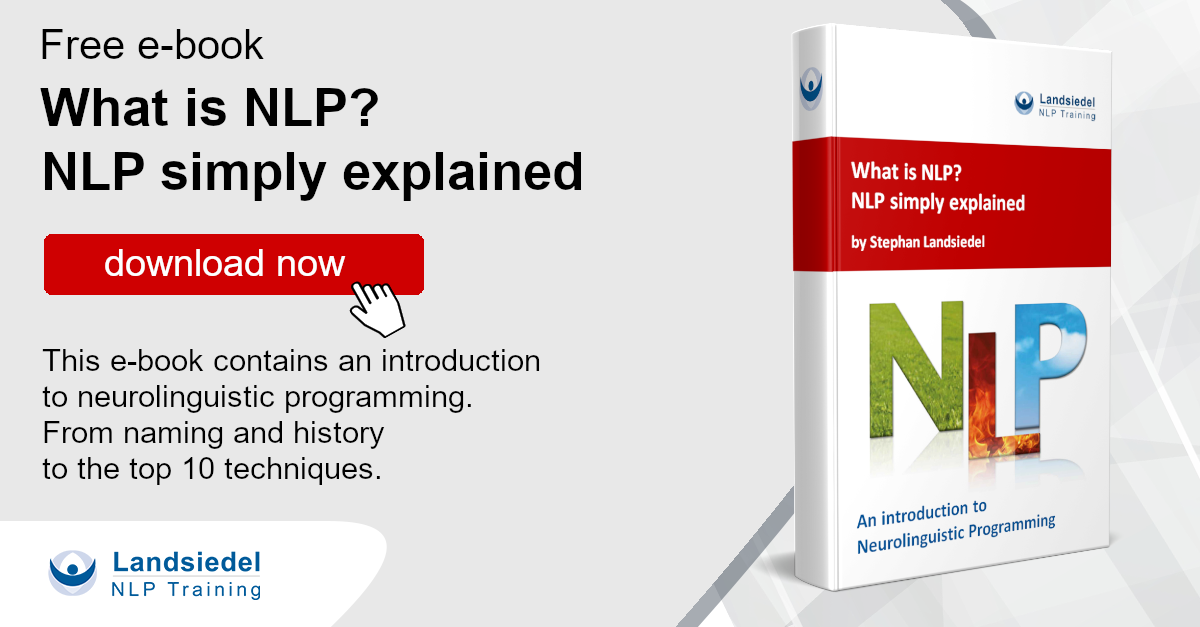Landsiedel NLP Training →
NLP →
Richard Bandler
Richard Bandler - one of the founders of NLP
Richard Bandler (1950 in New Jersey)

- Student of mathematics, computer science, then psychology
- Longhaired flower child
- Co-developer of NLP
- DHE, Neurosonics
Key data on Richard Bandler
- 1950 born in the state of New Jersey
- Mid 60s: one of the long haired flower children and active member of the hippies organised some big rock concerts of that time with.
- 1967: Robert S. Spitzer was introduced to the 17-year-old Richard Bandler (who taught drums to her son Dan) by his wife Becky: his open-mindedness towards philosophical questions and the way of teaching music.
- The Spitzers endeavoured to promote Richard Bandler's talents Spitzer described Bandler as a versatile and extraordinarily skilful man, and entrusted him with publishing work.
- 2 years Foothill College in Los Altos Hills: Richard Bandler showed a lack of willingness to subordinate himself without contradiction (making compromises, subordinating rituals of the academic world) and drove some professors almost to despair.
- University of California in Santa Cruz: Bandler was allowed to build a hut on the Spitzers' property, where he lived with his girlfriend and dog
- Courses in philosophy, mathematics, computer science
- But behavioural science became more important for Richard
- Bandler's special attention was given to Rolfing, family therapy and the work of Fritz Perls.
- 1972: Richard Bandler meets Virginia Satir at the Spitzers' weekend house, shortly afterwards at a workshop in Reno, and is very impressed by her work. Spitzer gives him the order to travel to Canada to record and transcribe a four-week seminar of Virginia Satir on tape. During the months of working with this material he adopted more and more of Virginia Satir's choice of words and intonation.
- 1972: Spitzer asks Richard Bandler to write a manuscript from the extensive material left behind by Perls.br> Richard Bandler was so intensively occupied with Perls that he began to speak and behave like Perls. "Spitzer amusedly described how he caught himself several times inadvertently addressing Bandler with 'Fritz'" (p. 225). Richard Bandler published 3 books:
- The Gestalt Approach
- Eye Witness to Therapy
- Legacy from Fritz
- Spring 1972: Richard Bandler offered a practice-oriented seminar on Gestalt therapy. He was interested in exploring the therapeutic effects of Gestalt work in a group and in developing his theoretical competence in practice.
The cooperation with John Grinder after 1972
During the courses on Gestalt therapy Richard Bandler met John Grinder and asked him to join the group as an observer (supervisor). This developed into a collaboration in which they also exchanged roles. First of all, they described linguistically sound language patterns and developed their own communication model from these, calling it a "meta-model". This led to Bandler and Grinder's first joint book "The Structure of Magic I" (1975). Later they moved on to the analysis of non-verbal communication.
Bandler and Grinder chose people as models who were exemplary in their field to find out what they did differently from others. They recorded the knowledge they gained in comprehensible steps. In retrospect, they called this process "modelling".
Among the people modelled were Fritz Perls, Virginia Satir, Gregory Bateson, Milton H. Erickson and Linus Pauling. Bandler also modelled the Israeli physicist and founder of the Feldenkrais School Moshe Feldenkrais.
Richard Bandler's contributions to neurolinguistic programming
Richard Bandler has decisively influenced or introduced several models of NLP, including the meta-model, the Milton model, Anchoring, reframing, supply change, nesting loops, submodalities, the timeline.


